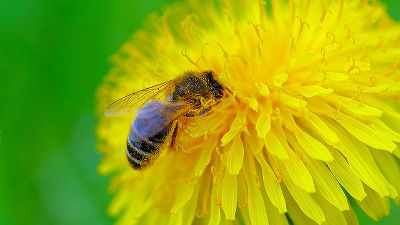Attempt to understand how the mutation spreads to the population and the 'evolution' of the organism is explained by 'graph theory'

by brewbooks
In the evolution theory advocated by Charles Darwin, it is said that the natural environment selects the mutation that occurs in living things, and the evolution advances to a direction favorable to survival. Dr. Martin Nowak, who is researching evolution at Harvard University, reveals the natural choice theory of such mutation by " graph theory ".
Mathematics Shows How to Ensure Evolution | Quanta Magazine
https://www.quantamagazine.org/mathematics-shows-how-to-ensure-evolution-20180626/
In the natural selection theory, not a large number of mutant individuals appear at once, the mutation that "happens to the surrounding environment" happened by chance will spread over time throughout the group. So the question is "Is it really spreading throughout the group just because one mutant species has appeared?" There is an idea that "the natural selection theory appears more prominently in a group breeding in a limited range like a small island", but people who have doubts that "I do not think that mutations will spread so conveniently" There is not much less.
In 2003, Mr. Nowak studied how cancer cells, "evidently unwanted biological evolution", caused by mutation, proliferate in the body, and eventually a positive evolution of living things "nature Selection theory "as well. Mr. Nowak considers the reasons why traditional biologists could not clearly explain the natural selection theory, thinking that "Because he was turning his eyes on specific biological groups," he explained the theory of more generalized natural selection theory I tried to explain using graph theory to build it.
Graph theory is a theory about graphs consisting of nodes (contacts) and edges (sides connecting contacts), Leonhardt Euler built a theory in the 18th century. Mr. Nowak applied individual organisms to each contact point and described the sides as a relationship between organisms. Individuals connected by side have the possibility to mate and leave descendants and have the possibility that the contacts of descendants are newly connected and their contacts are replaced with descendants, and individuals with strong relationships give "weights" to the sides I will describe the relationship. It is possible to describe the possibility that the lineage type whose relationship with other pedigree became thinner independently becomes another species by using the weighted graph.

Mr. Nowak explained the structure of the group that strengthens the natural selection theory in a 2005 paper that generalized the propagation of biological groups with graph theory. According to Mr. Nowak, in a population in which the direction of breeding is confined to one direction only, individuals who mutate can temporarily spread that mutation, but eventually replace them with regular populations It will be done.
However, it seems that the direction of breeding is bidirectional, and in a group that has a structure like a star, it turns out that the mutation spreads throughout as a graph. Mr. Nowak expressed this structure as " amplifier " and concluded that the living organism group having an amplified breeding structure will enhance the natural selection theory.

Unfortunately, in many organisms, amplified breeding structures were not found or had a complicated propagation structure that the amplifier structure could not be proven. Unfortunately it was a proof of the natural selection theory based on graph theory which seemed to have been stalled but Krishnendu Chatterjee , a computer scientist working at the Austrian Institute of Chemical Technology (IST) around 2008, explained Mr. Nowak's theory I came up with an idea to improve. Chatterjee, who originally studied graph theory, found that the amplifier in graph theory potentially has certain functions such as hub and loop .
Chatterjee succeeded in creating a powerful amplifier even in a biological group having a simple breeding structure as a result of changing the edge weighting in the graph structure based on the hub and loop structure. "The fact that we can reproduce the amplifier structure just by changing the weighting was a big surprise," Chatterjee says.

According to Mr. Nowak and Chatterjee, the theory of two can apply is that the model biological group is limited to the asexual reproduction group such as bacteria and other microorganisms. Considering the possibility of sexual reproduction, the model becomes very complicated, but unfortunately it says that it has not been able to graph the breeding structure in sexual reproduction.
In addition, the evolutionary speed does not necessarily progress at an ideal speed, and the effect other than the natural selection theory may be related to the evolution of living things. But Nowak and Chatterjee believe that algorithms to build powerful amplifiers are useful for cell researchers who wish to promote the appearance of mutants, and reproductive models using graph theory will benefit greatly in future It may bring.
Related Posts:







